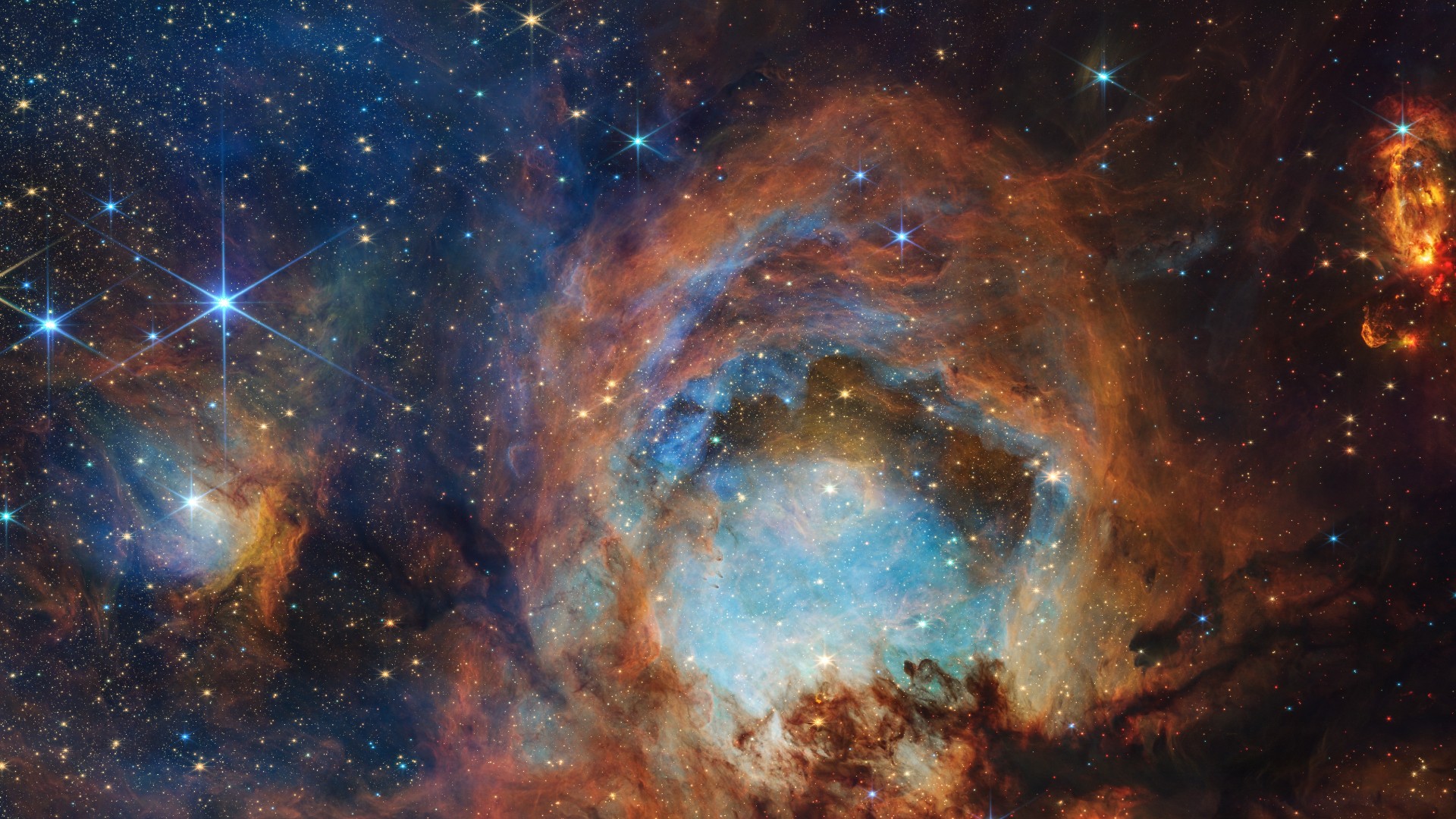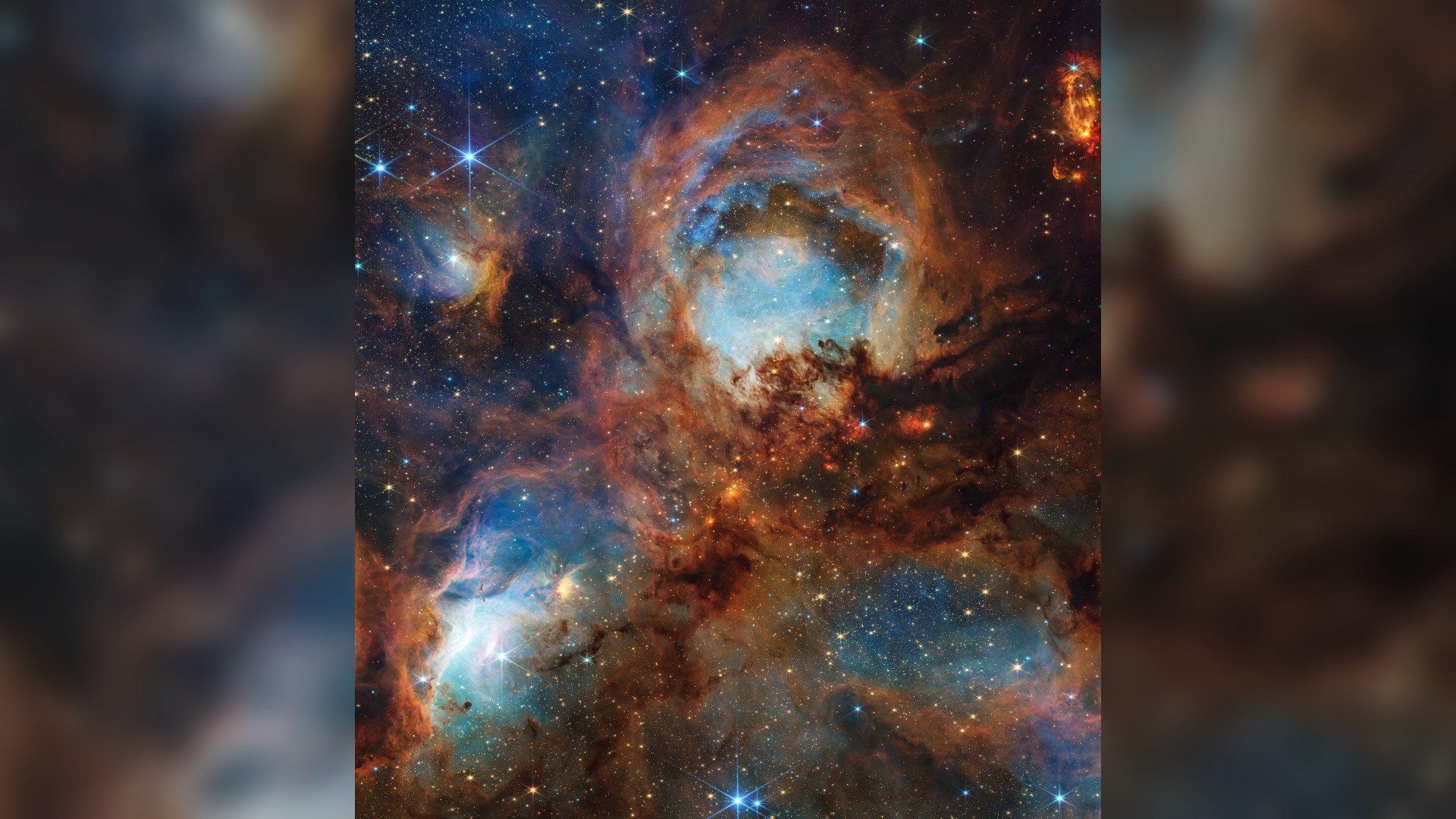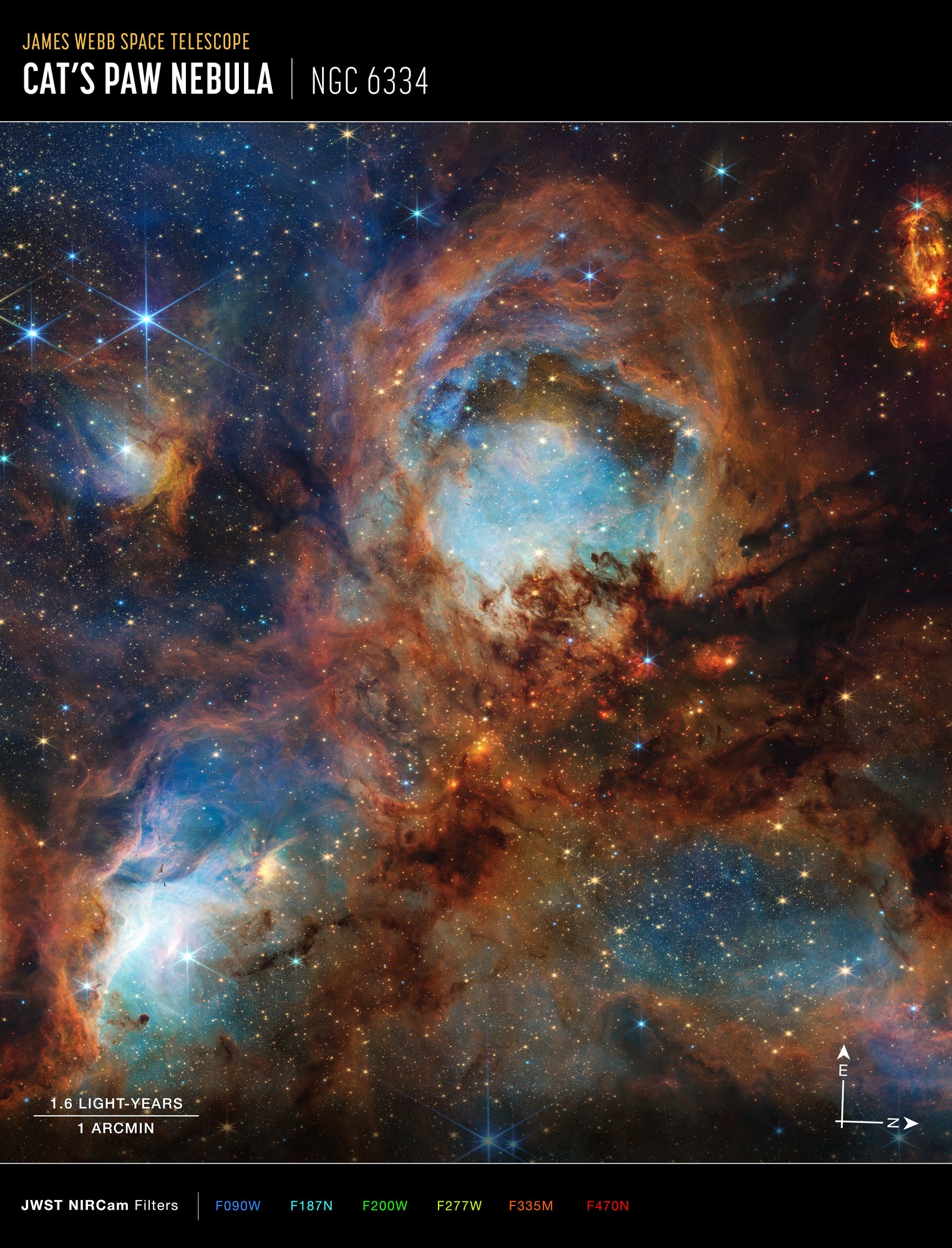
The James Webb Space Telescope (JWST) is celebrating three years of transformational science with a striking new image of the Cat's Paw Nebula — a vast nursery of stars located about 4,000 light-years from Earth in the constellation Scorpius.
Released Thursday (July 10), the JWST's new image offers a dazzling close-up of a section of the nebula known for its distinctive, pawprint-like appearance thanks to large, circular structures that resemble a feline's "toe beans," the soft pads on the bottom of cats' paws.
The image is only the most recent demonstration of what the groundbreaking telescope can do, scientists say. "Three years into its mission, Webb continues to deliver on its design," Shawn Domagal-Goldman, who is the acting astrophysics division director at NASA Headquarters in Washington D.C., said in a statement accompanying the image.

The nebula spans an estimated 80 to 90 light-years, and appears slightly larger than the full moon in our sky. The image highlights JWST's key ability to observe objects in infrared light, allowing it to see through dense clouds that otherwise obscure chaotic stellar nurseries.
"It's the cat's meow," NASA wrote in the statement accompanying the release. JWST "has 'clawed' back the thick, dusty layers of a section within the Cat's Paw Nebula."
The image captures intricate, never-before-seen details of the Cat's Paw Nebula, including how massive stars within it carve cavities in the surrounding gas and dust. These stars, though short-lived, dramatically reshape their environments by temporarily lighting up their surroundings before halting further star formation, according to the NASA statement.
Among the most eye-catching features is a red-orange oval near the top right. This quiet zone, sparse in background stars, appears to be a dense region in the early stages of star formation. Within it, veiled stars are beginning to shine, including one whose energetic outflow has produced a visible shockwave caused by high-speed ejection of gas and dust, which the Webb team says suggests intense stellar activity from a still-embedded star.
At the top center of the image is a structure nicknamed the Opera House, recognizable by its tiered, circular layers of orange-brown dust. Just below it, a bright yellow star has sculpted a compact shell around itself, though it hasn't managed to blow away all the surrounding gas.
The source of the nebula's cloudy blue glow may lie at the bottom of the structure, where gas is illuminated by bright yellow stars, or perhaps a still-hidden source behind dense dust, according to the NASA statement.
To the immediate left of the Opera House is a tuning-fork-shaped dark region with few visible stars, an indicator that thick dust filaments may be concealing stars still in formation.

Toward the image's center, fiery red clumps embedded in brown dust hint at sites of massive, ongoing star formation. One striking blue-white star in the lower-left "toe bean" appears particularly well-defined, having cleared the space around it through powerful radiation.
Dense filaments nearby, still resisting the harsh radiation-filled environment, may signal future birthplaces of stars, according to the statement.
Since beginning science operations in July 2022, JWST has transformed our understanding of the universe, from spotting the earliest galaxies yet to probing exoplanets and cradles of newborn stars. The anniversary image continues JWST's legacy while setting the stage for the missions to come, the statement read.
"As it repeatedly breaks its own records, Webb is also uncovering unknowns for new generations of flagship missions to tackle," Domagal-Goldman said in the statement.
"The questions Webb has raised are just as exciting as the answers it's giving us."







